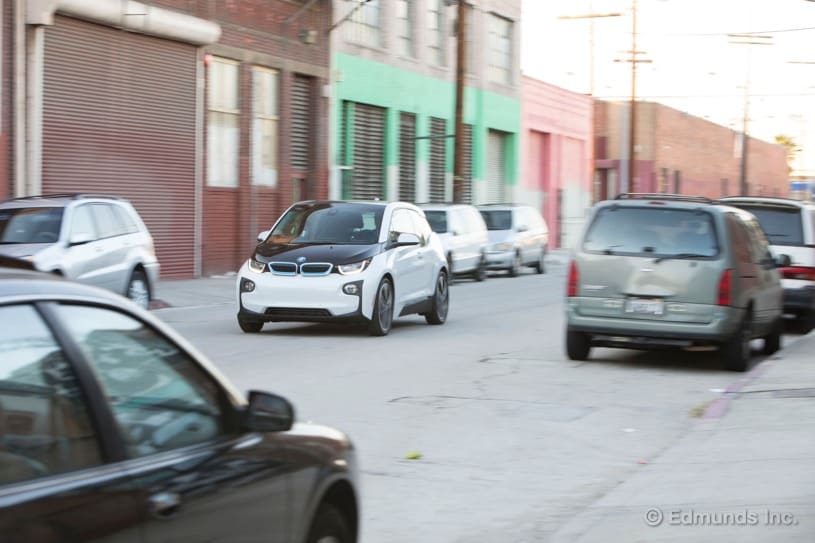Best tubeless tyre inserts: seven of the latest inserts reviewed
[ad_1]
Mountain bike tyres face a tough life and, considering the plethora of technological developments in the sport, it’s perplexing that something as trivial as a flat tyre is still an issue.
Riders rightfully demand relatively lightweight, fast-rolling and supple mountain bike tyres, but they also want to ride over rocks without flatting. These desires are not easily compatible. Even when using downhill-casing tyres weighing well over a kilo, punctures are still a fact of life for many.
Tubeless tyre inserts have increased in popularity and, depending on your style of riding, could be a worthwhile proposition if you’re regularly flatting and are worried about damaging your rim or tyre.
Let’s take a look at the advantages and disadvantages of running a tubeless tyre insert.
Why should you consider running a tyre insert?

Tyre inserts act as a barrier between the tyre and rim, and offer some distinct advantages. Firstly, you can afford to run your tyres at a slightly lower pressure on your mountain bike without having to worry about about pinch punctures, given there is no inner tube to pinch and the insert provides further stability against the tyre.
On the subject of the sidewall, tyre inserts increase their stability because they provide further support and reduce deflection. Tyre sidewalls can move or even fold when put under too much lateral force.
Tyre inserts also prevent rim damage, given they are the main contact point with the tyre should it be compressed. If a tubeless tyre is stressed beyond its capacity to create an airtight seal with the rim, air can escape out of the tyre, which is also known as ‘burping’. Inserts create a cushion between the tyre and the rim.
What are the downsides of running an insert?

Tyre inserts increase rotating and unsprung weight. The responsiveness of the bike is toned down due to the additional weight, which can be experienced when accelerating, braking, turning or jumping. They can also make suspension work less effectively, placing extra stress on the bike’s components and the rider’s body.
Installing a tyre insert can be quite a laborious process. They’re an extra item to cram into your tyre (which can also be difficult to fit on certain rim combinations) and that can be a real challenge.
Then, there is the additional cost. Ultimately, you need to consider whether the type of riding you participate in warrants the advantages a tyre insert can deliver.
How can I reduce punctures and protect my rim from damage without a tyre insert?

It’s first important to keep a careful eye on your tyre pressures – buy yourself a proper tyre pressure gauge, and use it. That’s not to say crank your tyre pressures too high – lower pressures will give you more grip and better comfort; and in rough terrain, less rolling resistance. The key is to find the pressures that work for your tyre setup and riding style, then stick to them.
The next thing to look at is your suspension setup. Suspension that’s too firm, or bottoms out too easily, or rebound damping set too slow or too fast, will increase the chances of puncturing. Check out this guide to setting your suspension up properly.
Finally, if you’re experiencing tubeless tyre punctures or rim damage, you could opt to fit heavier tyres. Yes, that will increase wheel weight; but to some extent, so will any of the above systems. Tougher tyres have other drawbacks, though. Thicker casings are less supple, so you’ll get more feedback through the bars and rolling speed will suffer too.
So a lighter tyre with an in-tyre system is probably a better, if more expensive, solution, especially for racing.
Also, if you’re the type of rider who already runs full DH tyres and still suffers flats, these could be your best chance of eliminating those pesky punctures.
We tested six of the latest tubeless tyre inserts to determine the best option for protection, while balancing being lightweight and offering good value for money.
Rimpact Pro

- Weight: 169g (29in)
- Price: £44.99 (each, with valve) / £71.99 (pair, with valves)
We were impressed by the Rimpact Pro’s low-profile, continuous full-circle design, which resulted in excellent tyre deformation (and therefore more grip) because the insert doesn’t encroach far into the tyre. The dual-compound closed-cell foam offers great rim protection, but is relatively lightweight.
Its slow rebound characteristics mean an increase in grip because the wheel feels less prone to bounce back after impacts. Sidewall support is best on test thanks to the large, flat side-profile and tight-fitting nature of the insert.
Due to its large volume and tight fit, the Rimpact Pro is a chore to install and the insert benefits from being pre-stretched (fitted to a rim for a while) before fitting.
Nukeproof Advanced Rim Defence

- Weight: 162g (29in)
- Price: £49.99 (pair, with valves)
Nukeproof’s Advanced Rim Defence tyre insert is the least expensive on test, but punches well above its weight in terms of quality and functionality. The full-circle, continuous design enables excellent tyre deformation and therefore more grip.
We found that, although lower volume than some others on test, the clever shape and dense, closed-cell, yellow foam provides effective rim protection.
The downside is the narrow insert has a rounded shape, which provides only minimal sidewall support and doesn’t add much to tyre stability, allowing it to squirm about more.
Cushcore Pro 29

- Weight: 264g (29in)
- Price: £84.99 / €96.80 / $102 / AU$148.70 (each, with valve) or £159.99 / €182.40 / $149 / AU$280 (pair, with valves)
The Cushcore Pro 29 is the monster truck of the group. The heaviest and one of the tightest to fit, it’s backed up by a progressive, damped feel and not a hint of a metallic ‘ding’ even at low pressures.
With a discreetly low profile in the tyre, the continuous full-circle design doesn’t impede tyre deformation as some of its taller, intrusive counterparts do, promoting plenty of grip.
When smashing a rock, the awareness of the insert comes in gently; it feels progressive and non-Newtonian, giving you the security to plunge into rock gardens with reckless abandon, even at the lowest pressures.
The Cushscore’s high weight is also its downfall because it changes the way the bike handles. The heavier-rotating mass makes it feel sluggish to change direction and is a bit of a burden on climbs.
The tough material and extra width also make it seriously challenging to fit (even when pre-stretched for a week), so thankfully Cushcore supplys custom tyre levers to help wrangle the insert. It’s also eye-wateringly expensive.
How we tested
We went to BikePark Wales to find the gnarliest course we could think of.
Starting with the G-force inducing ‘A470 line’ to test sidewall support, we then headed on to the aptly named ‘Rim Dinger’, where a barrage of high-speed rocks assault your wheels. We finished on more fast, smooth jumps, where carrying speed is crucial in the shape of ‘Insufficient Funds’.
The bike was a 2022 Trek Top Fuel 8 downcountry machine fitted with Bontrager Line wheels and Bontrager XR4 tyres.
Tyre pressures were kept at a constant 23psi front and 25psi rear, with the rider weighing 65kg.
Slicy Smooth

- Weight: 132g to 150g (claimed)
- Price: £39.99 (each, no valve)
The Slicy Smooth’s split design makes it one of the easier inserts on this list to fit, with helpful adhesive and Velcro to join the two ends. The relatively low-profile design means tyre deformation is good. It is reasonably lightweight, coming in 18g lighter than quoted.
However, there is negligible sidewall support due to the serrated-edge cut-outs. The compressible centre section and flat profile further don’t sit down into the rim well and can float around in the tyre.
The closed-cell material is fairly thick, but the insert’s composition seems less dense than others on test. This results in the insert sometimes giving way during a rim strike, allowing an ominous thunk to reverberate through the bike.
Vittoria Air-Liner

- Weight: 180g (M)
- Price: £51.49 / €58.99 / $61.99 / AU$123.49 (each, no valve)
Chunky and tall, the Vittoria Air-Liner insert provides good rim protection due to the high volume of foam inside the tyre. The substantial foam material and generous proportions mean it offers some sidewall support when cornering.
It’s a shame the design does not offer provision to join the two ends of the insert, so they flap about inside the tyre. Coupled with the bulky size, it means the Air-Liner rides high up into the tyre cavity, which is noticeable when riding, preventing tyre deformation and leading to reduced grip in unexpected places. It’s also a relatively expensive proposition for a non-continuous (split) liner.
Effetto Mariposa Tyre Invader

- Weight: 78g (55mm)
- Price: £55.99 / €74.49 / $55.99 / AU$118.49 (pair, no valve)
Effetto Mariposa’s Tyre Invader is super-lightweight and the extra rotating mass is barely noticeable when riding. This makes it ideal for downcountry riders who are after a little extra protection. The flexible and thin material also meant it was the easiest of the inserts on this list to fit – simply join the ends with some zip-ties and push it inside the tyre.
The downside is the insubstantial material and thin construction results in low levels of rim protection, with the rim dinging harshly during big impacts on our test route.
The Invader is very expensive for a non-continuous (split) insert, and at this price-point it’s disappointing to have to use zip-ties to join it. It offers almost no discernible sidewall support for the tyre.
Tannus Armour

- Weight: 160g (29in)
- Price: £45 / $59.99 (each, no valve)
The Tannus Armour’s extra sidewall support is noticeable when cornering and provides solid protection to both the rim and tyre. The full-circle continuous insert runs straight and true.
The negatives are the insert sits very high up in the tyre. It is noticeably restrictive, preventing normal tyre deformation, and you’re often aware of the insert pressing against the ground.
This can impede grip on rough terrain, making the tyres skip and lose traction more easily. Tricky to fit, the flimsy ‘bead’ gets in the way when trying to get the tyre on the rim and the voluminous insert, although not tight, is difficult to stuff inside the tyre.
Although restrictive during normal riding, the insert is easily compressed and doesn’t lend the same secure feeling on a rim-out as others on test.
[ad_2]
Source link








